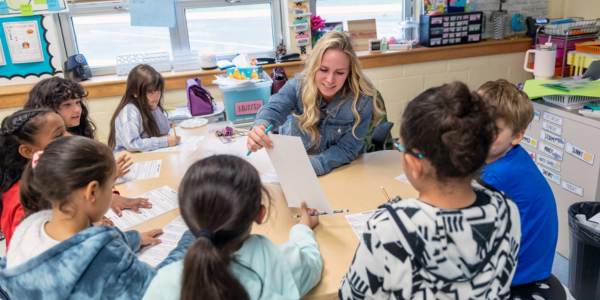
According to a new study conducted by the Joint Legislative Audit and Review Commission (JLARC), Virginia school divisions are underfunded in large part due to flaws and inadequacies in the state’s Standards of Quality (SOQ) funding formula. The JLARC conducts program evaluation, policy analysis and oversight of state agencies on behalf of the Virginia General Assembly.
Virginia school divisions receive local, state and federal funding, and Fairfax County accounts for $2.5 billion of the $10.5 billion in local funding. The SOQ formula is the primary way the state determines the amount of K-12 education funding for each jurisdiction. Decades of research confirm that funding has a critical role in the quality of K-12 education, and the likelihood of having exemplary teachers increases with sufficient funding.
Summary of Findings
- Virginia school divisions receive less K-12 funding per student than the 50-state average and the regional average, which equates to approximately $1,900 per student in state underfunding of Virginia’s students. Many of Virginia’s neighboring states spend more per pupil, including West Virginia, Kentucky and Maryland.
- The state Standards of Quality formula yields substantially less funding than actual division spending and benchmarks.
- The current SOQs dramatically underestimate the actual costs of public education, as evidenced by the fact that the SOQ formula provided $6.6 billion less than what was spent by local school divisions in FY 2021.
- The SOQ formula systematically underestimates school division costs, and still uses Great Recession-era cost reduction measures. These measures include the support positions ratio cap, which has artificially lowered the state’s funding contributions for critical educational support positions by hundreds of millions of dollars annually since its adoption in 2009.
- The formula does not adequately account for local labor costs. As a result, the formula includes additional factors, such as the Cost of Competing Adjustment (COCA), as an acknowledgement of the formula’s failure to account for cost of living. These factors are too small to appropriately counteract the inadequacy of the funding formula in recognizing the competitive salaries required in high cost-of-living regions to attract and retain high-quality personnel.
- Over the last 10 years, per pupil state funding for special education students has declined by 16%.
- The formula does not adequately account for higher needs students, and the methodology for at-risk students undercounts students in poverty.
- Virginia is one of nine states that use a staffing-based education funding model. Most states use a student-based K-12 funding formula.
Implications
The report includes short-term and long-term recommendations and policy considerations to strengthen the SOQ formula. These recommendations and policy options would potentially improve the state’s education funding formula and better ensure a quality education for Virginia students.
Fairfax County Public Schools at a Glance
- Fairfax County Public Schools (FCPS) is the largest school division in Virginia and the 11th largest school division in the nation.
- FCPS serves more than 181,000 students across 199 schools and centers.
- In FY 2024, Fairfax County is allocating 51.6% of its total General Fund disbursements to FCPS. For FY 2024, Fairfax County provides total funding of $2.6 billion through transfers to support FCPS operations.
- More than 86% of FCPS’ budget is allotted to instruction.
- According to the state superintendent’s most recent report on Sources of Financial Support for Expenditures, Fairfax County Public Schools received $3,046 per student in state aid for 2022, while the state average per student allocation was $4,938.
- The FY 2023 Washington Area Board of Education Guide reports that the cost per student in Fairfax County is $18,772.
- In FCPS’ FY 2024 Approved Budget, the cost per pupil is $19,795. Cost per pupil figures are computed by identifying all School Operating Fund costs and entitlement grants directly associated with an instructional program, such as Title I, Pre-K and Early Head Start, or elementary general education.
- In FCPS’ FY 2024 Approved Budget, 47,773 special education services are projected for 28,251 students; the average special education cost per service is $18,421.
- In FCPS’ FY 2024 Approved Budget, it is projected that 36,790 students will receive English for Speakers of Other Languages (ESOL) services in grades 1 through 12. The additional cost of providing services in FY 2024 for each English Learner student is $4,643.
Additional budget priorities can be obtained from the FY 2024 Approved Budget.



 SIGN UP FOR DAILY EMAIL HEADLINES
SIGN UP FOR DAILY EMAIL HEADLINES